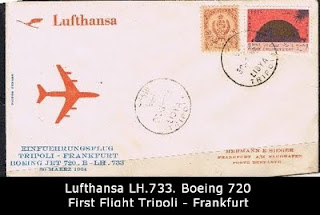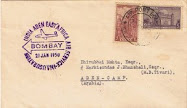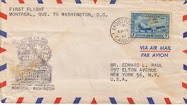


Four flights were made on that historic day 17th December, 1903, Here is Orville Wright’s account of the final flight of the day:
“
Wilbur started the fourth and last flight at just about 12 o'clock. The first few hundred feet were up and down, as before, but by the time three hundred feet had been covered, the machine was under much better control. The course for the next four or five hundred feet had but little undulation. However, when out about eight hundred feet the machine began pitching again, and, in one of its darts downward, struck the ground. The distance over the ground was measured to be 852 feet (260 m); the time of the flight was 59 seconds. The frame supporting the front rudder was badly broken, but the main part of the machine was not injured at all. We estimated that the machine could be put in condition for flight again in about a day or two. “
Unfortunately, after the fourth flight a powerful gust of wind flipped the machine several times severely damaging it. The machine never flew again Years later Orville restored and lent it to various locations for display.
There were 5 witnesses to the first flights, among them John Daniels who took the famous picture of the first flight.
The Wright Brothers’ claim to be the first to fly a powered aircraft was disputed for years after their first epic flight. The Smithsonian Institution of America did not recognize their claim to the first heaver-than-air machine. The extent of the dispute can be seen in the fact that the historic Flyer was on display at the
FDC of an airmail stamp issued by the US in 1949 on the 46th anniversary of the first powered flight of the Wright Flyer. The cover cachet however, commemorates the return of the plane to the US which took place in 1948.
For years after the historic first flight and hundreds of flights thereafter the world refused to acknowledge their achievements. Eye-witness accounts were treated with skepticism. Part of the reason could be their refusal to reveal details of their machine. The Wright Brothers were not wealthy and hoped their invention would make money for them.
In 1904, the brothers built a new aircraft naming it the Flyer II. Several experimental flights to take flying to the next plane. On 20th September , 1904, Wilbur flew the first complete circle in history by a manned powered machine, covering 4,080 feet in about a minute and a half. However, Flyer II was often out of control. So they decided to scrap it and built a new machine Flyer III using the same old engine. But they made important design changes which enabled better control. In October Wilbur made the longest flight of 24.5 miles in 38 minutes and 3 seconds
The only ones who witnessed these flights were close family and a few neighbours. None were witnessed by reporters so they went largely unreported in the press. However, reports slowly trickled out but were considered fantasy. In fact the
All that changed when Wilbur demonstrated the latest bi plane on August 8, 1908
FDC of stamp issued by USA to mark the Golden Jubilee of the first powered flight



























































